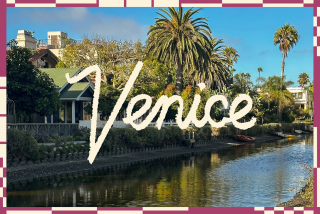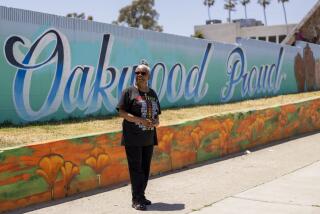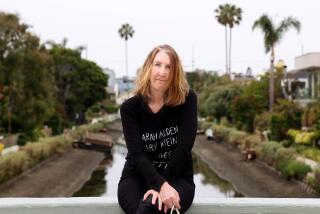Her Venice of the ‘90s No Match for His of the ‘70s
- Share via
Although I was only 2 when Richard Stayton first rented his apartment in Venice (“Leaving Venice,” March 1), his descriptions of his bohemian lifestyle and that of his neighbors in the late ‘70s was so vivid and wild that I wish I’d been 22 and living in Venice back then instead of having experienced it in the ‘90s.
I well remember heading off to Venice Beach nearly every day with a pack of my girlfriends, cavorting along the boardwalk, looking for trouble and too often finding it. Even in those days, I knew that there was no other place like Venice, where the drums don’t stop pounding until well into twilight, where people wear sarongs and sandals in December, where the ever-smiling man with the turban scoots about on roller skates while playing a guitar.
But what I saw and felt several years ago couldn’t have been anything like what Stayton lived through during his Venice days--surrounded by the drugs, the sex and the artistry, and all that lovely freedom.
Nancy S. Paik
Studio City
*
The character of the area described by Stayton was already lost by the ‘70s. My childhood in Ocean Park (Fraser Avenue) and Venice (Sunset Avenue) offered safe streets, clean benches and a neighborhood school (Broadway Elementary). Residents did not “live on the edge,” and lower-income wage earners and immigrants dwelt in a small-town atmosphere; it was a comfortable place to have a home.
What brought about its decline? Was it the filling of the marshes on Lincoln Boulevard for housing, the loss of the bingo palaces on Ocean Front Walk, the neglect of the canals by the City of Los Angeles? Who knows?
Today, when I go to trendy Santa Monica (where we lived after leaving Venice), or to desperate Venice itself, I am dismayed by the loss of a way of life that once offered so much naturalness as well as a sense of community.
Barbara Starr
Encino
More to Read
Sign up for The Wild
We’ll help you find the best places to hike, bike and run, as well as the perfect silent spots for meditation and yoga.
You may occasionally receive promotional content from the Los Angeles Times.






